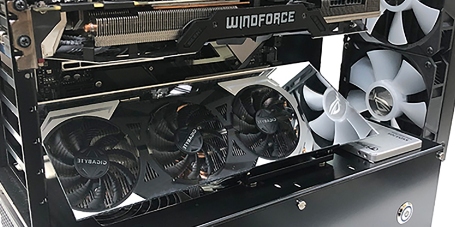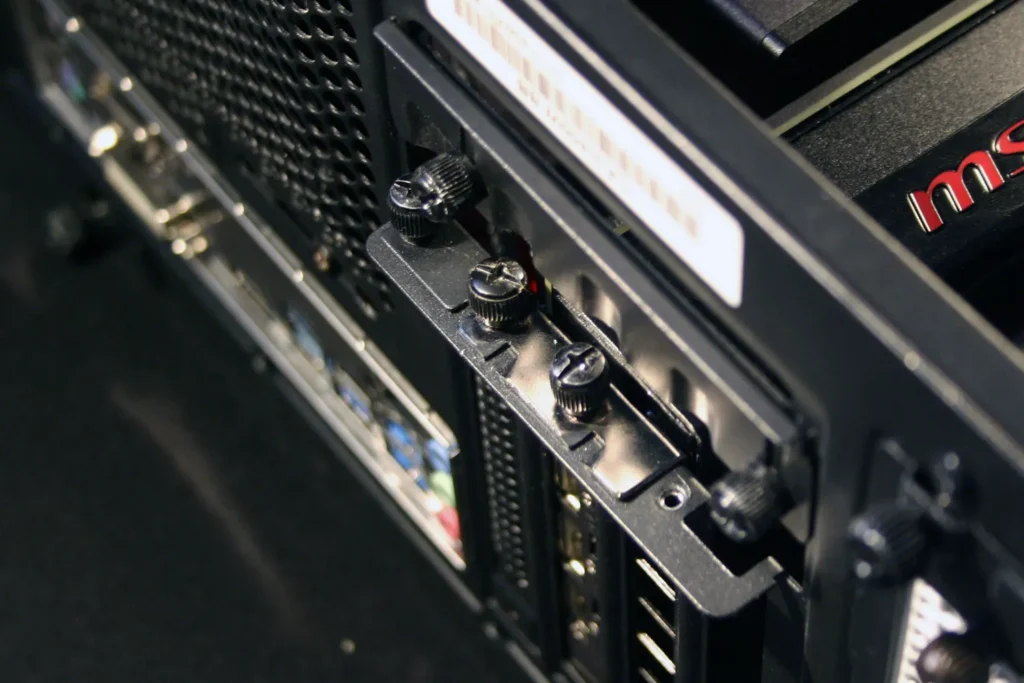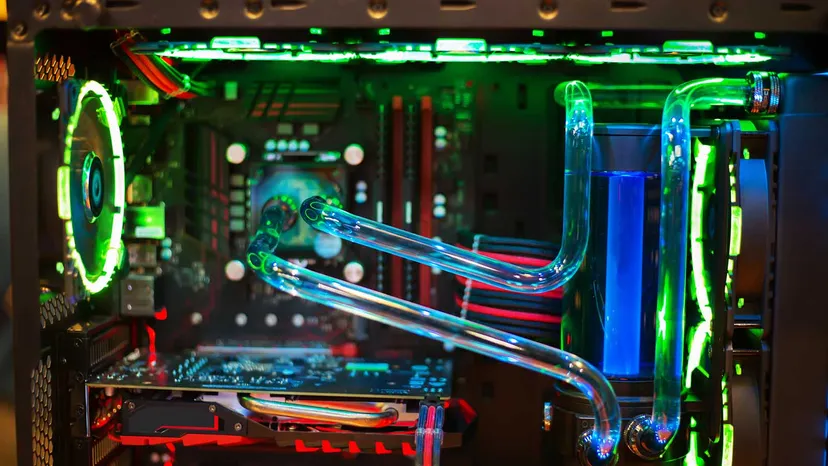To check if your GPU is upgrading a PC with a new graphics card, ensuring it’s compatible with the motherboard is important. This includes checking if the GPU will physically fit, get enough power, and work properly within the system.
In this article, we will explore how to check GPU compatibility and ensure your motherboard has a PCIe x16 slot. Also, confirm that your power supply and PC case can support the GPU properly.
Online GPU Compatibility Checkers
Online GPU compatibility checkers help you find if a graphics card will work with your PC. These tools check if your motherboard slot, power supply, and case size are suitable for the GPU. Websites like PC Part Picker are useful for this. Just enter your PC details, and it shows compatibility results easily.

Understanding GPU and Motherboard Compatibility
To understand GPU and motherboard compatibility, check if the motherboard has a PCIe slot, enough power, and space.
Importance of PCIe Slots and Versions:
PCIe slots connect your GPU to the motherboard. The slot’s version (like PCIe 3.0 or 4.0) affects speed and performance. Newer GPUs work best with higher PCIe versions. While most GPUs are backward compatible, using a lower version can limit performance.
Check your motherboard’s PCIe version for better results.
Read Also: Pytorch Check If GPU Is Available – Check GPU Compatibility!
Checking Physical Fit and Clearances:
Before putting in a new GPU, make sure it fits in your PC case. Measure the GPU’s length, height, and width and compare it with the space inside the case. Also, ensure there’s enough room for cables and airflow to avoid overheating and ensure the system’s proper functioning.

Power Supply Considerations:
When adding a new GPU, check your power supply’s capacity. Ensure it has enough wattage to support the GPU. Also, check for the correct power connectors needed by the GPU, like 6-pin or 8-pin. An insufficient power supply can cause crashes, performance issues, or damage to your system.
Ensuring Optimal GPU Performance
To ensure optimal GPU performance, keep your drivers updated, manage temperatures with good cooling, and use the correct power settings. Adjust in-game graphics settings for a balance between performance and quality.
Regularly clean dust from your PC to prevent overheating and keep the GPU running smoothly.
Avoiding Bottlenecks and Compatibility Issues:
To avoid bottlenecks and compatibility issues, match your GPU with a suitable CPU and ensure the motherboard supports the GPU’s speed and power needs. Check for a PCIe slot, enough power connectors, and proper cooling.
A balanced setup prevents slowdowns and allows your PC to run efficiently.

Maximizing Airflow and Cooling Efficiency:
To maximize airflow and cooling, arrange your PC’s fans for proper air intake and exhaust. Keep cables organized to reduce blockages, and regularly clean dust from the case. Good airflow lowers temperatures and improves your GPU’s performance.
Read Also: How Many Degrees Is Overheating GPU – Act Fast!
Graphics Card Specifications and Upgrade Path:
Before upgrading, check your current GPU’s specifications, like memory, clock speed, and power needs. Choose a new GPU with better specs and ensure it’s compatible with your motherboard and power supply. This helps make sure the upgrade goes well without problems.
How do you test a motherboard for compatibility with a new graphics card?
To test compatibility, check if your motherboard has a PCIe x16 slot for the new GPU. Make sure the power supply has the required connectors. Also, confirm that your PC case has enough space for the GPU to fit properly.

Check the specifications:
When choosing a GPU, always check its specifications like memory size, clock speed, power needs, and connector type. Compare these specs with your motherboard and power supply to ensure they match. This helps prevent compatibility and performance issues.
Update the BIOS:
Updating the BIOS can improve compatibility with newer GPUs and fix system issues. To update, download the latest BIOS version from your motherboard’s manufacturer’s website, follow the instructions carefully, and restart your PC. Always backup data before updating.
Install the graphics card:
To install a graphics card, turn off your PC and unplug it. Put the GPU into the PCIe x16 slot on the motherboard. Secure it with screws, connect power cables if needed, and close the case. Then, start your PC.

Install the drivers:
After installing the graphics card, turn on your PC and install the drivers. Get the newest drivers from the GPU maker’s website. Follow the instructions to install them. Restart your PC to make sure the drivers work well and improve performance.
Test the performance:
To test GPU performance, run games or benchmark software to check frame rates and graphics quality. Monitor temperatures using software tools to ensure the GPU does not overheat. Adjust settings if needed for a smoother gaming experience and better performance.
Optimizing and Maintaining GPU Performance
To optimize GPU performance, keep drivers updated, manage temperatures, clean dust regularly, and adjust game settings for better performance.
Read Also: Is It Bad To Stress Test Your GPU – Protect your GPU!
Managing Heat for Sustained Performance:
To manage heat for better GPU performance, ensure good airflow in your PC case. Use quality fans and clean dust regularly. Monitor temperatures with software, and consider adding extra cooling solutions if temperatures are too high to prevent overheating.

Balancing System Resources:
It means ensuring your CPU and GPU work well together. Avoid using too many background programs while gaming. Adjust settings in games for smooth performance, and upgrade components if one part is weaker to improve overall system efficiency.
Upgrading Drivers and System Components:
To upgrade drivers and system components, regularly check for updates from the GPU manufacturer. Install the latest drivers for better performance. Also, consider upgrading RAM or storage if your system feels slow. These updates help your PC run more efficiently.
Frequently Asked Questions:
1. What is a typical GPU usage percentage during gaming?
During gaming, a typical GPU usage percentage ranges from 70% to 90%. This means the GPU is working hard to deliver good graphics and performance. If usage is too low, it may indicate a bottleneck or settings issues in the game.
2. How can I assess if my GPU utilization is too low?
To assess low GPU utilization, monitor performance using software like MSI Afterburner or Task Manager. If the GPU usage is below 50% during gaming, it may indicate a bottleneck, incorrect settings, or CPU limitations affecting overall performance. Adjust settings if needed.
3. What steps can be taken to maximize GPU performance?
To maximize GPU performance, update drivers regularly, optimize in-game settings, and manage temperatures with good cooling. Clean dust from the PC, ensure proper airflow and consider overclocking if safe. These steps help your GPU run faster and smoother.
4. Can all GPUs fit in any motherboard?
No, not all GPUs fit in every motherboard. Each GPU needs a PCIe x16 slot, and the motherboard must support the GPU’s size and power requirements. Always check compatibility before buying a GPU to ensure it works with your motherboard.
5. Is my GPU compatible with my motherboard Reddit?
On Reddit, you can ask if your GPU is compatible with your motherboard by sharing details like the GPU model and motherboard type. The community can help by giving advice and suggestions based on their experiences and knowledge.
Conclusion
In conclusion, ensuring GPU compatibility with your motherboard is essential for optimal performance. Always check for the right PCIe slot, power requirements, and physical fit before upgrading. By following these guidelines, you can enjoy a smooth and efficient gaming experience.